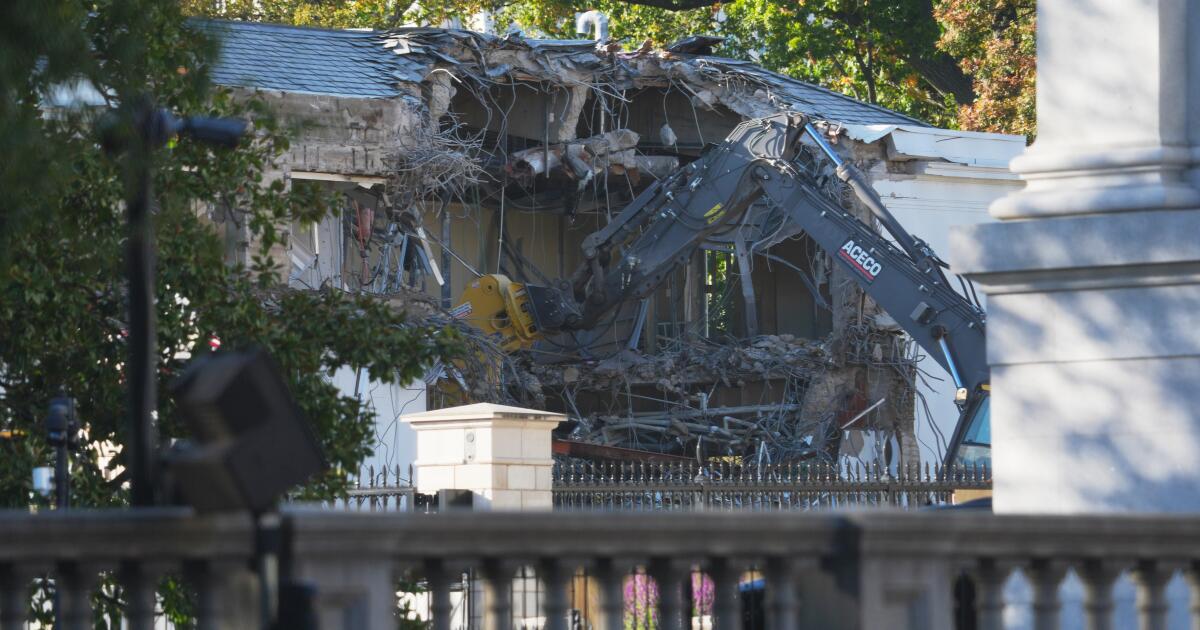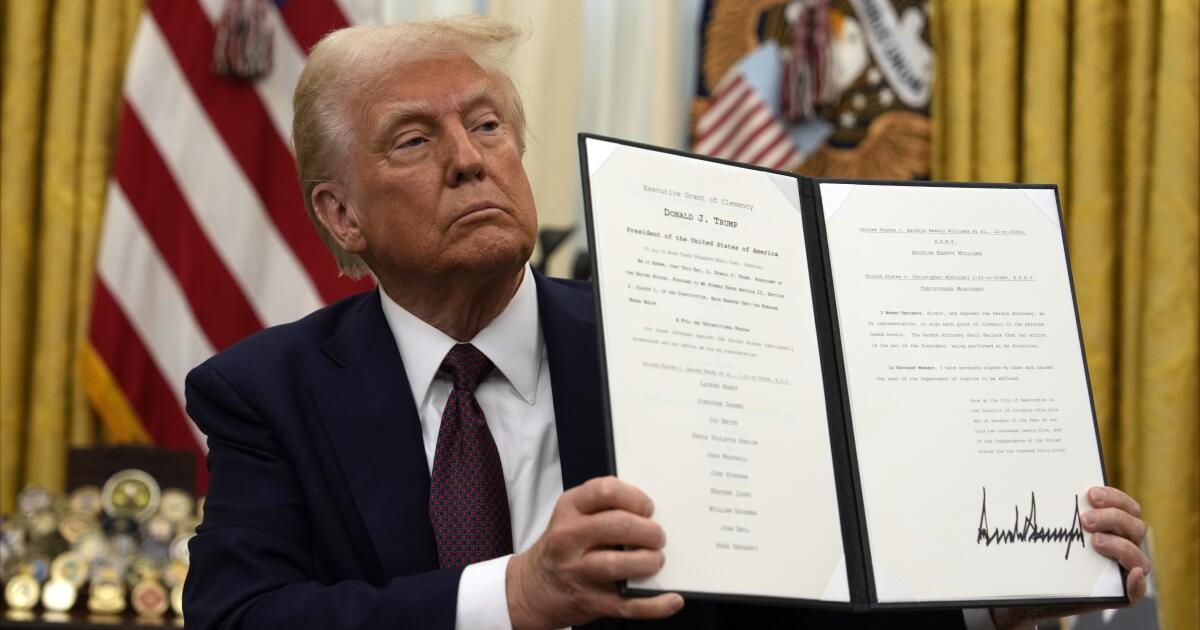The White House starts demolishing part of the East Wing to build Trump’s ballroom
WASHINGTON — The White House started tearing down part of the East Wing, the traditional base of operations for the first lady, to build President Trump’s $250-million ballroom despite lacking approval for construction from the federal agency that oversees such projects.
Dramatic photos of the demolition work that began Monday showed construction equipment tearing into the East Wing façade and windows and other building parts in tatters on the ground. Some reporters watched from a park near the Treasury Department, which is next to the East Wing.
On Wednesday, the New York Times reported that the plan now called for the demolition of the entire East Wing and that the tear-down should be completed by Sunday. Citing a source, The Times said it marks an escalation over earlier plans for the ballroom.
Trump announced the start of construction in a social media post and referenced the work while hosting 2025 college baseball champs Louisiana State University and LSU-Shreveport in the East Room. He noted the work was happening “right behind us.”
“We have a lot of construction going on, which you might hear periodically,” he said, adding, “It just started today.”
The White House has moved ahead with the massive construction project despite not yet having sign-off from the National Capital Planning Commission, which approves construction work and major renovations to government buildings in the Washington area.
Its chairman, Will Scharf, who is also the White House staff secretary and one of Trump’s top aides, said at the commission’s September meeting that the agency does not have jurisdiction over demolition or site preparation work for buildings on federal property.
“What we deal with is essentially construction, vertical build,” Scharf said last month.
It was unclear whether the White House had submitted the ballroom plans for the agency’s review and approval. The White House did not respond to a request for comment and the commission’s offices are closed because of the government shutdown.
The Republican president had said in July when the project was announced that the ballroom would not interfere with the mansion itself.
“It’ll be near it but not touching it and pays total respect to the existing building, which I’m the biggest fan of,” he said of the White House.
The East Wing houses several offices, including those of the first lady. It was built in 1902 and and has been renovated over the years, with a second story added in 1942, according to the White House.
Karoline Leavitt, the White House press secretary, said those East Wing offices will be temporarily relocated during construction and that wing of the building will be modernized and renovated.
“Nothing will be torn down,” Leavitt said when she announced the project in July.
Trump insists that presidents have desired such a ballroom for 150 years and that he’s adding the massive 90,000-square-foot, glass-walled space because the East Room, which is the largest room in the White House with an approximately 200-person capacity, is too small. He also has said he does not like the idea of hosting kings, queens, presidents and prime ministers in pavilions on the South Lawn.
Trump said in the social media announcement that the project would be completed “with zero cost to the American Taxpayer! The White House Ballroom is being privately funded by many generous Patriots, Great American Companies, and, yours truly.”
The ballroom will be the biggest structural change to the Executive Mansion since the addition in 1948 of the Truman Balcony overlooking the South Lawn, even dwarfing the residence itself.
At a dinner he hosted last week for some of the wealthy business executives who are donating money toward the construction cost, Trump said the project had grown in size and now will accommodate 999 people. The capacity was 650 seated people at the July announcement.
The White House has said it will disclose information on who has contributed money to build the ballroom, but has yet to do so.
Trump also said at last week’s event that the head of Carrier Global Corp., a leading manufacturer of heating, ventilation and air-conditioning systems, had offered to donate the air-conditioning system for the ballroom.
Carrier confirmed to the Associated Press on Monday that it had done so. A cost estimate was not immediately available.
“Carrier is honored to provide the new iconic ballroom at the White House with a world-class, energy-efficient HVAC system, bringing comfort to distinguished guests and dignitaries in this historic setting for years to come,” the company said in an emailed statement.
The clearing of trees on the south grounds and other site preparation work for the construction started in September. Plans call for the ballroom to be ready before Trump’s term ends in January 2029.
Superville writes for the Associated Press.










